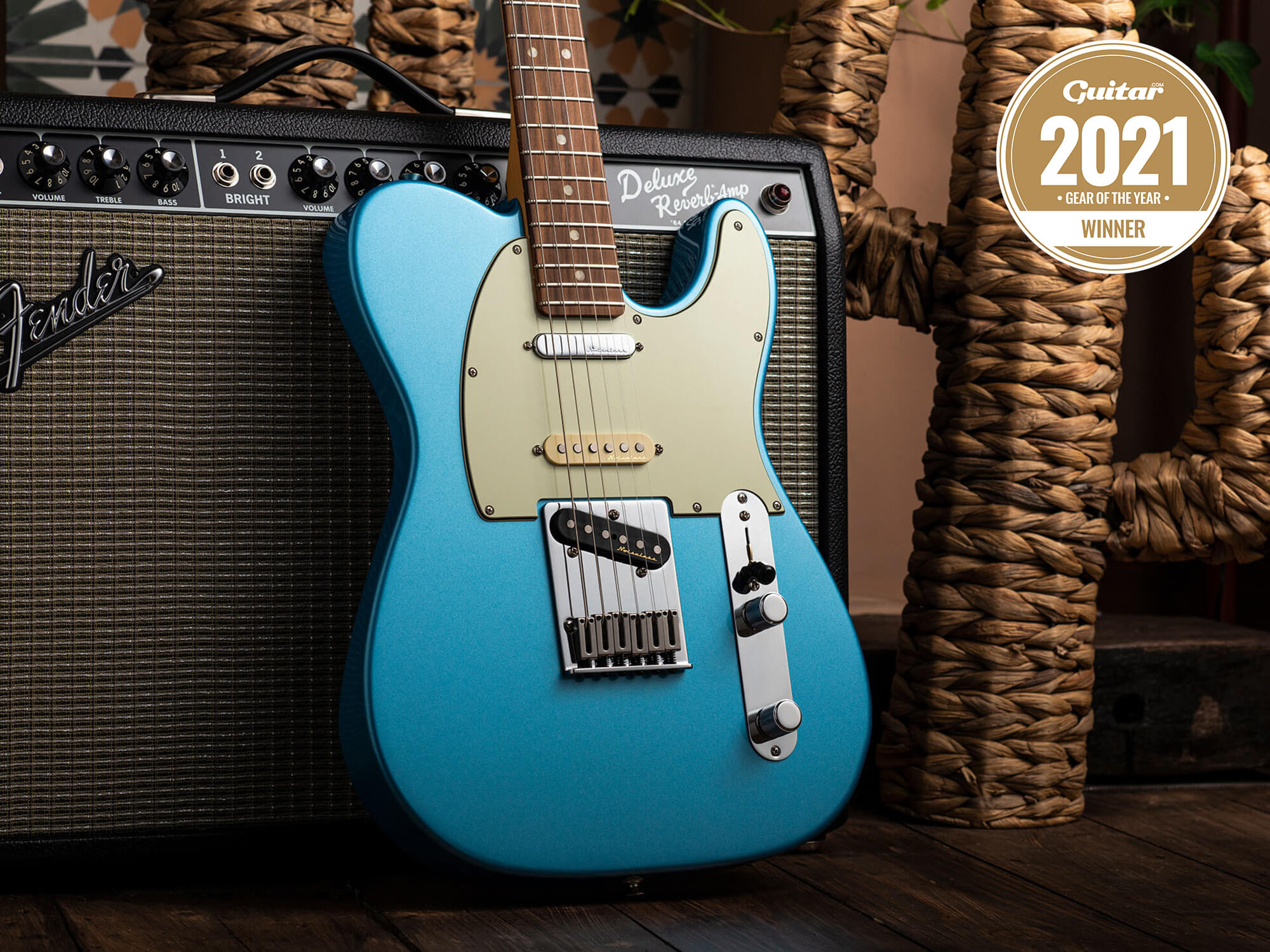 We are an independent, advertising-supported comparison service. Our goal is to help you make smarter financial decisions by providing you with interactive tools and financial calculators, publishing original and objective content, by enabling you to conduct research and compare information for free - so that you can make financial decisions with confidence.
We are an independent, advertising-supported comparison service. Our goal is to help you make smarter financial decisions by providing you with interactive tools and financial calculators, publishing original and objective content, by enabling you to conduct research and compare information for free - so that you can make financial decisions with confidence.Bankrate has partnerships with issuers including, but not limited to, American Express, Bank of America, Capital One, Chase, Citi and Discover.
The offers that appear on this site are from companies that compensate us. This compensation may impact how and where products appear on this site, including, for example, the order in which they may appear within the listing categories. But this compensation does not influence the information we publish, or the reviews that you see on this site. We do not include the universe of companies or financial offers that may be available to you.
Buying a home
Refinancing your existing loan
Finding the right lender
Additional Resources
Elevate your Bankrate experience
Get insider access to our best financial tools and content
Compare accounts
Use calculators
Get advice
Bank reviews
Elevate your Bankrate experience
Get insider access to our best financial tools and content
Compare by category
Compare by credit needed
Compare by issuer
Get advice
Looking for the perfect credit card?
Narrow your search with CardMatch™
Personal Loans
Student Loans
Auto Loans
Loan calculators
Elevate your Bankrate experience
Get insider access to our best financial tools and content
Best of
Brokerages and robo-advisors
Learn the basics
Additional resources
Elevate your Bankrate experience
Get insider access to our best financial tools and content
Get the best rates
Lender reviews
Use calculators
Knowledge base
Elevate your Bankrate experience
Get insider access to our best financial tools and content
Car insurance
Homeowners insurance
Other insurance
Company reviews
Elevate your Bankrate experience
Get insider access to our best financial tools and content
Retirement plans & accounts
Learn the basics
Retirement calculators
Additional resources
Elevate your Bankrate experience
Get insider access to our best financial tools and content
We are an independent, advertising-supported comparison service. Our goal is to help you make smarter financial decisions by providing you with interactive tools and financial calculators, publishing original and objective content, by enabling you to conduct research and compare information for free - so that you can make financial decisions with confidence.
Bankrate has partnerships with issuers including, but not limited to, American Express, Bank of America, Capital One, Chase, Citi and Discover.
The offers that appear on this site are from companies that compensate us. This compensation may impact how and where products appear on this site, including, for example, the order in which they may appear within the listing categories. But this compensation does not influence the information we publish, or the reviews that you see on this site. We do not include the universe of companies or financial offers that may be available to you.
At Bankrate we strive to help you make smarter financial decisions. While we adhere to strict , this post may contain references to products from our partners. Here’s an explanation for
Bankrate follows a strict editorial policy, so you can trust that we’re putting your interests first. Our award-winning editors and reporters create honest and accurate content to help you make the right financial decisions.
We value your trust. Our mission is to provide readers with accurate and unbiased information, and we have editorial standards in place to ensure that happens. Our editors and reporters thoroughly fact-check editorial content to ensure the information you’re reading is accurate. We maintain a firewall between our advertisers and our editorial team. Our editorial team does not receive direct compensation from our advertisers.
Bankrate’s editorial team writes on behalf of YOU – the reader. Our goal is to give you the best advice to help you make smart personal finance decisions. We follow strict guidelines to ensure that our editorial content is not influenced by advertisers. Our editorial team receives no direct compensation from advertisers, and our content is thoroughly fact-checked to ensure accuracy. So, whether you’re reading an article or a review, you can trust that you’re getting credible and dependable information.
You have money questions. Bankrate has answers. Our experts have been helping you master your money for over four decades. We continually strive to provide consumers with the expert advice and tools needed to succeed throughout life’s financial journey.
Bankrate follows a strict editorial policy, so you can trust that our content is honest and accurate. Our award-winning editors and reporters create honest and accurate content to help you make the right financial decisions. The content created by our editorial staff is objective, factual, and not influenced by our advertisers.
We’re transparent about how we are able to bring quality content, competitive rates, and useful tools to you by explaining how we make money.
Bankrate.com is an independent, advertising-supported publisher and comparison service. We are compensated in exchange for placement of sponsored products and, services, or by you clicking on certain links posted on our site. Therefore, this compensation may impact how, where and in what order products appear within listing categories. Other factors, such as our own proprietary website rules and whether a product is offered in your area or at your self-selected credit score range can also impact how and where products appear on this site. While we strive to provide a wide range offers, Bankrate does not include information about every financial or credit product or service.
Whether you’re buying a refrigerator or a clothes dryer, shopping for home appliances can be overwhelming — especially if it’s been years since your last foray. Appliance tags spout features you’ve never heard of and aren’t sure you even need. Add in the choice of size, color, manufacturer, energy efficiency ratings, rebate availability and apps, and it’s enough to confuse anyone.
So which features should you splurge on, and where can you save?
“What it boils down to is for you to know your lifestyle, what’s valuable or important to you,” says Julie Wood, a senior director at General Electric Appliances.
For example, some features that cost more are purely aesthetic, such as stainless steel exteriors. “Stainless steel is more of a premium appearance, and it really is all about style, it’s not about function,” Wood says. For a side-by-side refrigerator, for example, you’ll pay around $200 more for a model in stainless steel, rather than the usual black or white.
When it comes to functionality, though, saving or splurging can make a big difference. Here are tips for shopping for several of the most popular new home appliances.
The process of drying clothes hasn’t changed much since the dryer was invented in the early 1900s. The machine heats up air and blows it through the drum, raising the water temperature in the clothes and removing it (as steam) through a vent. Dryers now come with a wide array of settings, cycles and touchpads, and some offer more features than you really need. That said, some features — like ones that add steam to release wrinkles or sense the remaining moisture to determine the right length of drying cycle — can be worth the added cost.
Washers, on the other hand, have changed a lot from the top-loading agitators of yesteryear. Clothes washers today can be “engineered to stay fresh and clean by using technology to help prevent the growth of odor-causing bacteria and eliminate the need for owners to wipe down their machine or leave the door open after each load,” explains Stephanie Greene, a senior manager at GE Appliances. And that’s just one example. Some washers also include a secondary, smaller door to add items you forgot once the cycle is already running or customization options so you can create your ideal wash cycle.
When to save: Unless you really want your laundry appliances to ping your phone when a cycle is finished, you can probably skip the smart (WiFi-enabled) ones, at least for now. And if you’re truly looking to keep costs low, stick with knobs instead of electronic controls. They serve the same function, but you’ll pay 10 percent to 15 percent more for the electronic touchpad, which tells you where you are in the drying cycle. You can still estimate that from the knob position.
When to splurge: It’s worth paying more for high-efficiency washers and dryers up front, because they’ll help you cut utilities bills in the long run. Choosing an ENERGY STAR-rated washer means using 33 percent less water, while an ENERGY STAR-rated dryer uses 25 percent less energy, which can save you hundreds of dollars over the life of the appliance.
Stabilization features can add 10 percent to the dryer’s cost, but that means a quieter machine. A steam feature might also save you money in the long run. It reduces wrinkles, saving the hassle of ironing button-down shirts or other garments you might otherwise send out for professional laundering or dry cleaning. Expect to pay an extra $50 to $100 for a steamer function, says Wood.
Shopping tip: “Consider ergonomics (e.g., front load can be easier to reach into), washer capacity and size based on how much laundry you are doing and where the washer/dryer will be set up in your home,” Greene advises.
When shopping for a stovetop and an oven range, you’ll need to first decide if you want them together or separate. From there, you also need to choose if you want one or two oven cavities and whether you want it built-in or free-standing. You’ll pay extra for the built-in look. If you choose to separate the cooktop and oven, too, you’ll pay more because you’re technically purchasing two separate appliances.
When to save: “Consider how much oven capacity you need based on your lifestyle,” Greene urges. Double-wall ovens are popular for frequent entertainers or big households: It’s nice during holidays to cook a turkey or roast in one oven and side dishes in another. But if the bird only trots out on Thanksgiving, save some money and stick with a freestanding range, with burners on top and an oven below. Some ranges offer two smaller ovens instead of one large one. While more costly than single-cavity ranges, they are often less expensive than built-in units, says David VanderWaal, head of marketing at LG Electronics North America.
If you’ve a choice in fuel, know that gas ranges fall on the lower-cost end of the stove top spectrum. Many cooks prefer gas stoves to electric or induction cooktops, because they feel the open flame gives them more control over the heat, although this type is generally harder to clean.
When to splurge: If you have an electric range and hate the length of time it takes for the coils to heat and cool, choose an induction range. It costs 20 to 30 percent more, but the food cooks faster and it uses less energy. But be careful. Induction relies on magnetic energy transfer, so pots and pans have to be flat-bottomed and made of cast iron or stainless steel. “It does require certain cookware,” says VanderWaal.
Shopping tip: General Electric estimates that 80 percent of all cooking happens on the range versus in the oven. “You’ll see a lot of features there because that’s where people spend more of their time,” says Wood. Look for a design you like that’s easy to clean.
You might not want to heat up your oven for a smaller dish, and you don’t need to. With toaster ovens (aka countertop ovens), you get compact kitchen appliances that can prepare or reheat your food.
When to save: “It’s important for consumers to think about how they live now and how they expect to live in the future to determine what features are best for them,” Greene says. If you only need your toaster oven to reheat some pizza or prep a frozen meal, you can probably opt for a fairly straightforward, no-frills model. This is especially true if you have one full-size oven in your inventory of kitchen appliances.
When to splurge: If you don’t have an oven (here’s to you, studio dwellers), it’s worth spending more to get a countertop oven that can do more for you. Often dubbed “multi-function ovens,” their cooking methods are indeed many: They can toast, proof, roast, bake, broil, dehydrate, air fry, steam, and/or keep your food warm, for example. Some also feature convection cooking or offer specialty settings for foods like bagels, toast and pizza — and many are smart, meaning you can operate them remotely via your phone. It’s worth splurging if any of these features directly align with how you plan to use the appliance.
Shopping tip: There’s no standard size for countertop ovens, so Greene advises, “Consider the countertop space that you have and the oven features that you want.” You might also want to measure the length of the cord since a lot of countertop ovens come with short ones. If you want easy cleaning, choose an appliance with a non-stick coating and a removable crumb tray, too.
Water heaters are rarely a planned purchase: The vast majority of consumers buy them when their current water heater breaks down. Before plunking down your credit card, do some research on this seemingly simple appliance because it uses roughly 20 percent of your home energy — the second-highest home energy hog, behind the heating, ventilation and air-conditioning (HVAC) system.
When to save: Most people replace their heaters with a style similar to their old ones. But if the kids have moved out, you may be able to get by with a smaller-capacity (read: less expensive) tank. A gas-powered storage tank will be your most affordable option here.
When to splurge: If you want lower energy bills and can afford to spend a little more, opt for a tankless, heat pump or solar water heater. Plus, while they exist for ENERGY STAR-rated gas storage water heaters, rebates for these more efficient types of water heaters are usually much higher (think: $300 instead of $100).
Shopping tip: Before you go shopping, look for available rebates online: You can use this ENERGY STAR rebate finder to get started. Professionally installing the water heater can cost as much or more than the appliance itself, but it’s probably not feasible for DIYers to do.
When it comes to narrowing down the best fridge, a lot hinges on how much refrigerator storage you actually need. A family of six will want something different than a pair of empty nesters who frequently dine out. Think about what you will store in it, too. A French-door refrigerator — with two doors that open outward and a split in the middle — can hold wide trays and pizza boxes, but a side-by-side cannot.
When to save: “French-door refrigerators are considered the premium of the refrigerator market,” says Wood. And that premium style costs more. If your main concern is just keeping things cold, stick with a side-by-side or top or bottom-freezer unit. Top and bottom freezers are the bread and butter of the industry, with many sizes, fewer bells and whistles and lower prices overall. Side-by-side units still have upscale features, but they’re more economical than a French-door model.
When to splurge: If you’re renovating a kitchen, consider spending about 15 percent more for a counter-depth refrigerator. What you lose in space (7 to 8 inches in depth), you’ll make up for in room flow and aesthetics (an appliance almost flush with the cabinets). “It’s more for someone who is design- or style-focused; it’s more of a high-end appearance,” says Wood. Her colleague Greene also recommends exploring newer quad-door configurations, for the ultimate in organization and storage flexibility — some high-end models have sections that can switch from freezer to regular fridge.
Shopping tip: If kitchen space is tight, pay attention to a refrigerator’s measurement with the door open 90 degrees. Features such as adjustable and split shelves allow more customized storage options.
Every dishwasher has to meet a minimum performance level — national- and state-set standards, says Wood. When you spend more, you’re paying for things such as energy efficiency, upgraded filtration, additional wash arms, rack styles and noise reduction.
When to save: Higher-end dishwashers are integrated, with no buttons on the front. Instead they’re hidden on the door top. This only affects function if you’re prone to leaning on the dishwasher and setting it off. If you’re more careful and don’t mind the look of dishwasher buttons, you’ll save 20 percent by avoiding these models. You can also skip dishwashers with a heated dry cycle to save on your electricity bill. A dishwasher with condensation drying will dry dishes more energy efficiently, or you can simply turn off your dishwasher’s heated dry cycle to slash the electrical cost to run it in half.
When to splurge: If a quiet machine is important to you — you don’t want your dishwasher drowning out conversation or interrupting your sleep — splurge on a dishwasher with a stainless steel interior, which costs 10 percent to 15 percent more. Not only is it quieter than one with a plastic lining, it will be better sealed, smell better and won’t get cuts in the lining. You may also want to explore newer drawer-like dishwashers that pull out from the surrounding counter. Some of these dishwashers feature two separate compartments so you can wash smaller loads of dishes without wasting water and energy.
Shopping tip: Pay attention to the model’s decibel rating — the lower the better, of course. And if you’re looking for a way to keep the cost of running your dishwasher down, the best appliances for you will be ENERGY STAR-certified.
Bankrate.com is an independent, advertising-supported publisher and comparison service. Bankrate is compensated in exchange for featured placement of sponsored products and services, or your clicking on links posted on this website. This compensation may impact how, where and in what order products appear. Bankrate.com does not include all companies or all available products.
Bankrate, LLC NMLS ID# 1427381 | NMLS Consumer Access
BR Tech Services, Inc. NMLS ID #1743443 | NMLS Consumer Access
© 2022 Bankrate, LLC. A Red Ventures company. All Rights Reserved.
source https://1home.streamstorecloud.com/when-to-save-or-splurge-on-appliances-bankrate-com/?feed_id=1818&_unique_id=631cf38a57781
 Over the last three years entrepreneurship has soared.
Over the last three years entrepreneurship has soared.  Miami, Florida - Yesterday, a federal district judge in South Florida sentenced a 44-year-old former actor and movie producer from Bartlesville, Oklahoma, to 262 months in prison for his role in a financing scheme that defrauded investors out of more than $60 million. The defendant, Jason Van Eman, also was ordered to pay certain victims over $9 million in restitution.
Miami, Florida - Yesterday, a federal district judge in South Florida sentenced a 44-year-old former actor and movie producer from Bartlesville, Oklahoma, to 262 months in prison for his role in a financing scheme that defrauded investors out of more than $60 million. The defendant, Jason Van Eman, also was ordered to pay certain victims over $9 million in restitution.

 BEAN'S GRANT, NH — A Coventry man was rescued Wednesday after suffering an injury while hiking in the mountains of New Hampshire, officials with New Hampshire Fish and Game said.
BEAN'S GRANT, NH — A Coventry man was rescued Wednesday after suffering an injury while hiking in the mountains of New Hampshire, officials with New Hampshire Fish and Game said. The Energy News Network is powered by support from readers like you. Please give today and help us keep our news open and accessible for all.
The Energy News Network is powered by support from readers like you. Please give today and help us keep our news open and accessible for all.  The best guitars, amps, pedals and more from another fantastic year for the guitar industry.
The best guitars, amps, pedals and more from another fantastic year for the guitar industry. 





 A colorful and artful celebration held at Bixby Park in Long Beach will not only honor Ukrainian refugees, but also provide direct aid to the men, women and children directly affected by the Russian invasion of Ukraine.
A colorful and artful celebration held at Bixby Park in Long Beach will not only honor Ukrainian refugees, but also provide direct aid to the men, women and children directly affected by the Russian invasion of Ukraine.